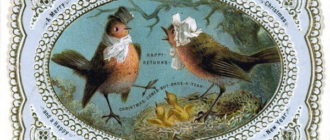A small canvas depicts a desolate landscape of the Catalan coast – the sea, the beach and Cape Creus, which was often painted by the master. Against this backdrop, a surreal action unfolds. The foreground is a rectangular stone on which a softened clock is casually thrown. The bronze Breguet is devoured by ants – in the work of the master, they mean decay and death.
A fly is perched on the gold watch – a symbol of inspiration, and another – silver – is about to drain from the dry olive branch. A little further, a sleeping amorphous head is visible – the image of Dali himself – covered with another softened chronograph. The picture is deeply symbolic, filled with catchy, dual images, and belongs to the Freudian stage of Dali’s work. The molten clock in the foreground signifies the passing time. The chronometer on the table is the present, hanging from a bare branch – the past, covering the sleeping head – the future.
A deserted beach washed by the sea and located at the foot of a majestic cape is a symbol of the state of mind of the master himself. Some sources mention that during that period the artist experienced mental discomfort, emptiness. That is why the blurred something, covered by the flowing dial, is a bit like a fish thrown ashore. The sea has always been a desirable object for Dali. He not only loved sea travel and preferred beach holidays to all others. The artist idolized the sea and constantly confessed his love to him with his works.
He was sure that this element is not subject to time – it is immortal and eternal.
Another image – a mirror – is also often found in the artist’s work. This object means duality, mutability. The mirror reflects both reality and illusions born of dreams with equal ease. A dry branch is a symbol of a thought that is no longer capable of bearing fruit, on which the past time rests. Interestingly, in the background, near the rocks, Dali depicted an egg, meaning rebirth and life. This is one of the most frequent images in the works of the master.
Salvador Dali. Painting “Persistence of Memory”, 1931, brief information
Author: Salvador Dali (1904-1989).
Year of writing: 1931.
Size: 24 x 33 cm.
Style: surrealism, symbolism.
Genre: Landscape.
Technique: Oil painting.
Material: Canvas.
Location: Museum of Modern Art, New York.
Salvador Dali is an outstanding Catalan artist of the 20th century, surrealist, author of more than one and a half thousand works. The painting “Persistence of Memory” is typical and even collective for his work. It contains all the symbols so beloved by the great Catalan.
It is not surprising that this particular masterpiece has become the hallmark of the master. The images of “Constancy”, along with the famous “lips”, are associated by the general public with Dali’s surreal art. The outline of melting chronometers in Dali’s painting The Persistence of Memory (the canvas also has other names – Soft Clock and Time) appeared in the master’s head while observing a piece of Camembert spreading from the July heat.
The idea of the work was born while waiting for the return of Gala from the cinema, and the work on it took only 2 hours. The painting “Persistence of Memory” has become, without exaggeration, the most famous masterpiece of the master. He truly loved her and often talked about this job. And Gala herself, who inspired Dali to write the work, said that it was unforgettable.







